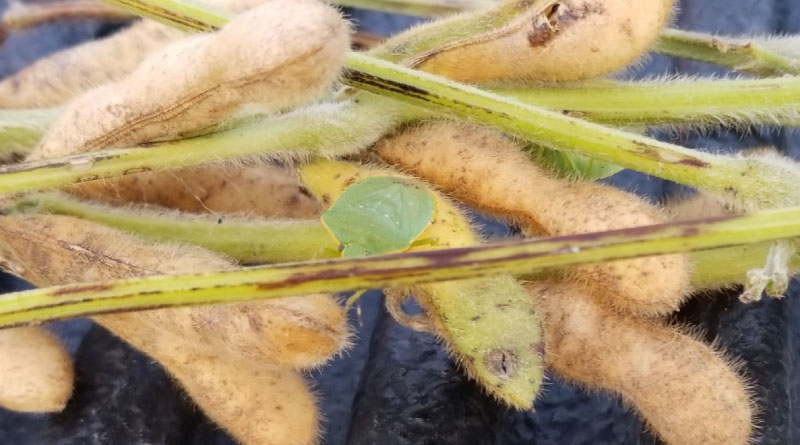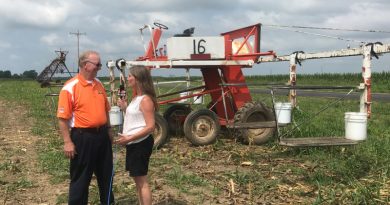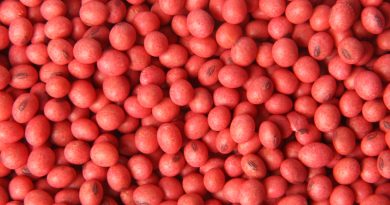Tough Beans – Green Stem Syndrome
There have been a few complaints about soybeans staying green and retaining their leaves while pods and seeds appear dry. It can be frustrating when you must slow the combine to a snail’s pace to harvest tough soybeans. There is no doubt the months of August and September were drier than usual for many in the Burrus footprint. In some of these stressed fields, plants have been staying stubbornly green. This phenomenon is known as green stem syndrome (GSS) (Figure 1) and there are physiological reasons causing it.
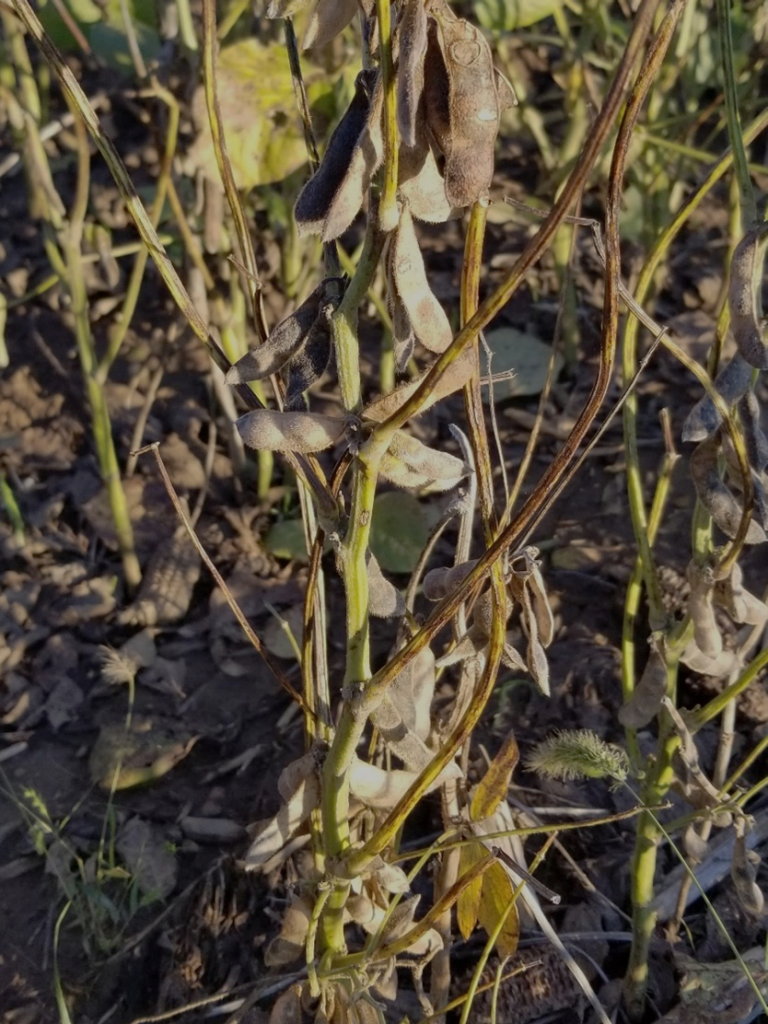
Environmental Causes
Drought stress during early reproductive stages, followed by rainfall during pod fill, is a common trigger for GSS. Soybeans can be fickle and easily abort blooms or pods during stressful conditions. Sugars are then concentrated in the stems since there are fewer pods to fill. In droughty fields, I have observed the lowest pod on plants with GSS being much higher than plants with brown stems. The lowest pods on GSS plants are the first ones aborted, resulting in lower pod totals. Brown stems and higher pod counts are more prevalent in areas of the field holding moisture.
Viral Causes
There are viruses that can cause this phenomenon as well, including: bean pod mottle virus, soybean mosaic virus, and soybean bud blight (tobacco ringspot virus). These viruses are transmitted by insect feeding, and there is very little that can be done once symptoms are noticed. One of the more severe instances of GSS I observed was in a field with high green stink bug pressure (Figure 2). These insects have piercing and sucking mouthpieces and are the most problematic during seed fill. If they are present in high enough concentrations, pods and individual seeds can abort. Stink bug control is only practical during the growing season when the plant’s pods and leaves are green and actively growing.
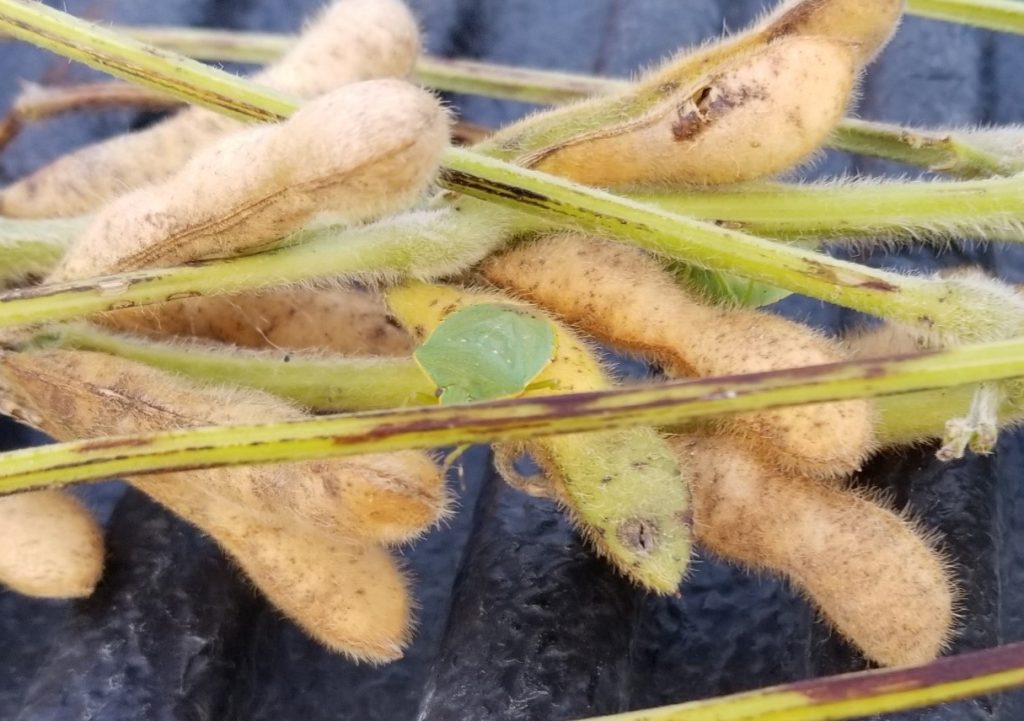
Environmental and viral factors are the leading GSS causes. However, there is a genetic tendency for some varieties to have a higher prevalence of GSS. The timing of environmental stress in relationship to soybean flowering is something to keep in mind and may lead to certain maturities having less GSS than others. All the factors above have a common theme related to stress and pod abortion. Researchers at the University of Kentucky induced GSS when they removed 25 to 50% of the pods from soybean plants at R6. Plants with GSS had higher soluble sugar, starch, and nitrogen content within their stems. Symptoms persisted until frost occurred when plants were de-podded 50%. While plants that were de-podded 25% took 9 days to reach stem maturity.
Management
Regarding GSS management, there are few options to reduce it. The most common practice is to adjust the combine setup and reduce speed to harvest tough soybeans. The onset of shattering pods is a significant risk and the most pressing reason to harvest. Lastly, active scouting and insect control during the growing season is important in preventing virus transmission and protecting developing pods. Given the recent cold weather across the Midwest, frost will most likely end GSS in many fields this fall.
article written by: Dana Harder, CCA – Burrus Seed Field Agronomist

